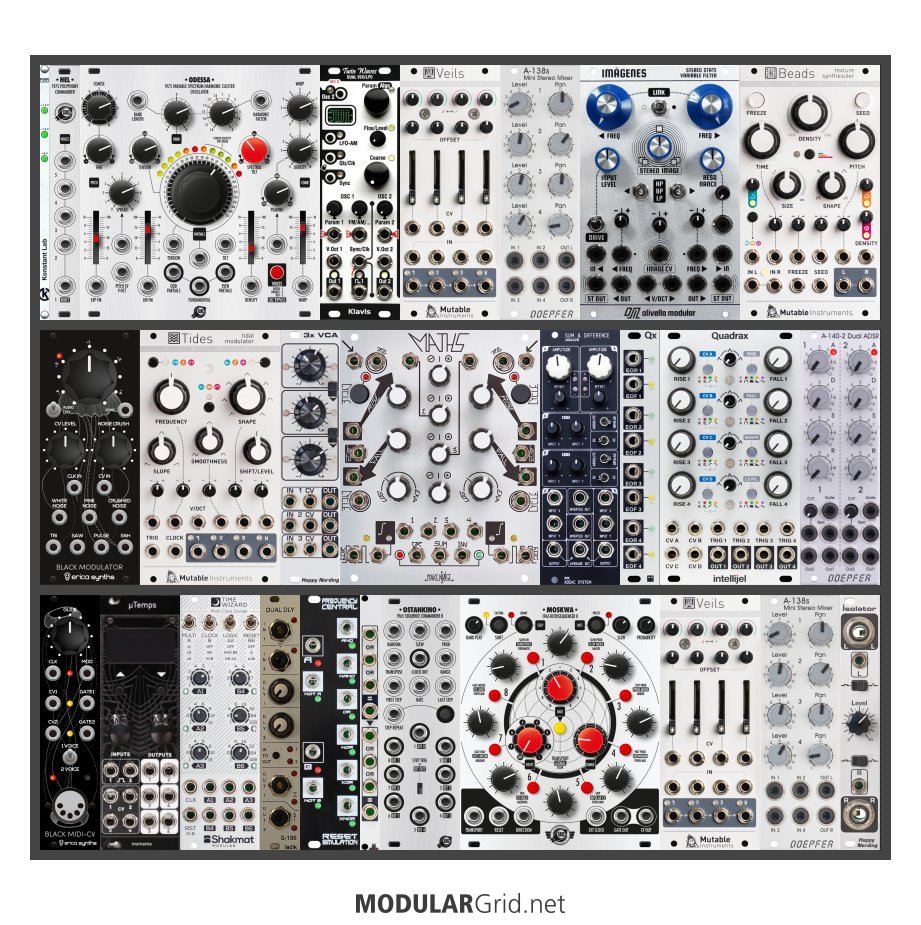Ahhhhh...you tried to defy the MG Kitty! Living dangerously there...
Hmmmm...OK, let's see...if the build from earlier would take two years, and there's a car driving 60 MPH halfway between Cleveland and Chicago, and it's a Wednesday in October, then my hat is actually orange. Oh, wait...
OK, given that the build was double what it ought to be, let's screw with it some. Gonna play "How low can you go"...
EDIT: OK, I scrunched this somewhat, managed to drop the cost by $700-ish AND added more neat functions:

The top row got changed a lot. But it got even more entertaining. First up, the Bufflide got removed, but this allowed me to add the polyphony adapter for the Xaoc Odessa, which is now the main VCO. This sucker's WAY too complex to explain here; go and have a look at the specs instead. And then, for two more oscillators, I put in the mkii version of Klavis' Twin Waves...very useful devices, as they not only are wavetable VCOs, they also have internal quantization...meaning that you can create single-voice patterns from LFO curves, etc with a bit of patching creativity. I put a replication of the final mixer modules after that so that you can generate a stereo submix of the oscillators to feed to the Olivella stereo SVF, and then this passes to the Beads. So there's still that subtractive aspect there, but now you've got some rather potent digital VCOs to feed it.
Middle row was not spared, either. I put in an Erica Black Modulator v.2 for noise, sample and hold, and an extra LFO. Tides was added for a "slow" modulation source. VCAs, Maths...and then an interesting attenuverter module from ADDAC that can also output sum and difference voltages from thruputted modulation signals. This should allow the modulation aspect to get even MORE complex...while still saving a bit of $$ there. Then I put in the current "do it all" modulator, Intellijel's Quadrax and its Qx expander to allow lots of complex internal and keyed external behavior. And there's still two ADSRs there, courtesy of Doepfer's A-140-2.
Bottom row antics saw me change to an Erica two-voice MIDI interface and the swap of a Temps Utile for the Pam's. Then there's six channels of clock manipulation via a Shakmat Time Wizard. Pulse delays next, then the Boolean logic, and THEN the diode OR for pulse combination. The rest of the row is otherwise unchanged.
It's not the simplest thing to try and "down-budget" from a previous build, but it CAN be done. As mentioned, this shaves about $700 US from the cost that I can see here. But it's approaching a zone where I wouldn't want to cheap it down further, because beyond this point you're likely to see compromises in functionality that would make this less of a teaching/lab tool and more like a personal instrument, and this probably shouldn't go in that direction.

